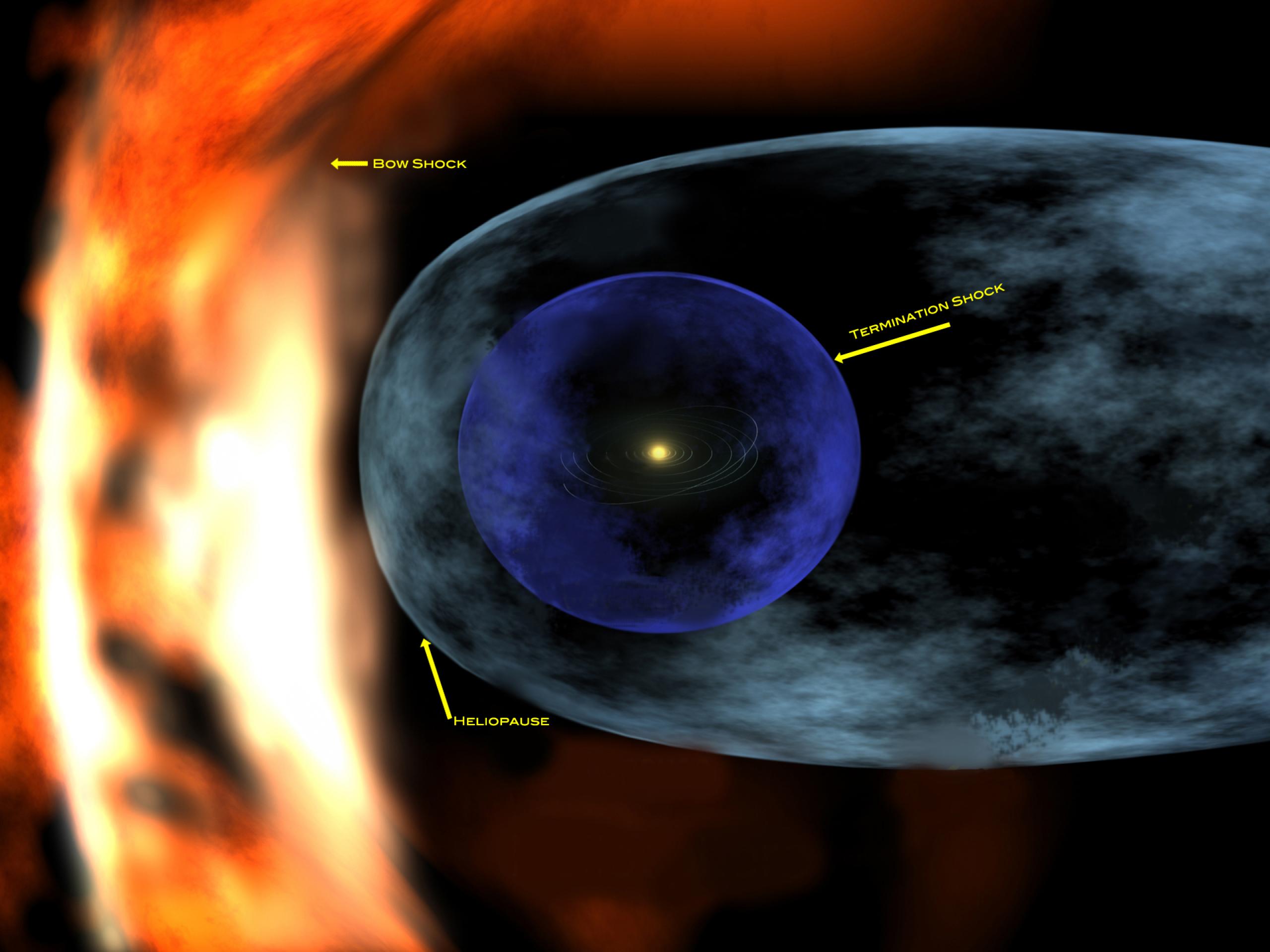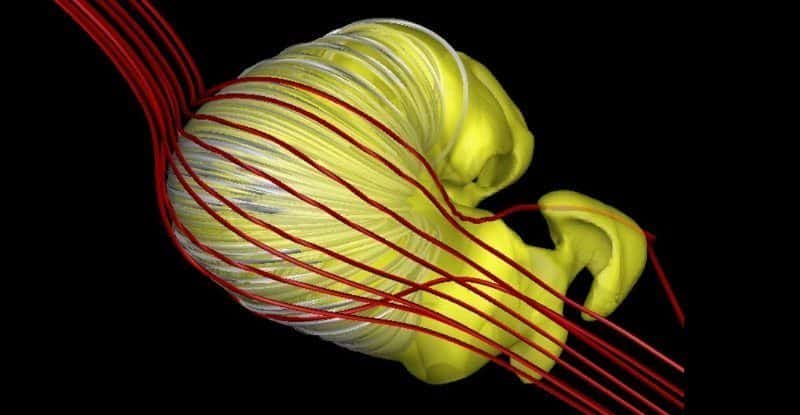Every planet in our Solar System, including our own, is enclosed in a bubble of solar wind, emanating from our Sun at supersonic speeds.
The particles making up this wind create an invisible magnetic field, which protects us from the rest of interstellar space. For decades now, astronomers have been analysing this system of radiation and magnetism known as a heliosphere, mapping its boundaries in an effort to figure out what it looks like.
A collaborative new model from experts at several different universities now suggests it’s a weird amalgamation of pretty much all our theories.
For many years, scientists thought the heliosphere looked more like a comet or a wind sock, with a round nose at one end and a trailing tail at the other.
This is how it is usually depicted in textbooks and articles, but in recent years, there are two other shapes that seem more likely.

In 2015, data from the Voyager 1 spacecraft suggested there were two tails, making the heliosphere look more like a weird croissant. Two years later data from the Cassini mission suggested we should do away with the whole tails thing altogether, making it more like a giant beach ball.
“You don’t accept that kind of change easily,” says Tom Krimigis, who led experiments on both Cassini and Voyager.
“The whole scientific community that works in this area had assumed for over 55 years that the heliosphere had a comet tail.”
Now, we may have to reshuffle our assumptions once again, because if the new model is right, the heliosphere could very well be shaped like both a deflated beach ball and a bulbous croissant, it just depends on where and how you define the boundary.
The heliosphere is thought to extend more than twice as far as Pluto, with the solar wind constantly pushing up against interstellar matter, protecting us from charged particles which could otherwise tear through our Solar System.
But figuring out where this boundary exists is like trying to figure out which shade of grey should distinguish black from white.
Using data from the New Horizons spacecraft, which is now exploring beyond Pluto, astronomers have figured out a way to tease the two sides apart.
Instead of assuming charged particles are all the same, the new model breaks them down into two groups: charged particles from the solar wind and neutral particles drifting in the Solar System.
Unlike charged particles in interstellar space, these neutral “pickup ions” can slip through the heliosphere easily, before having their electrons knocked off.
By comparing the temperature, density and speed of these pickup ions to solar waves, the team has figured out a way to define the shape of the heliosphere.
“The depletion of [pickup ions], due to charge exchange with the neutral hydrogen atoms of the interstellar medium in the heliosheath, cools the heliosphere, ‘deflating’ it and leading to a narrower heliosheath and a smaller and rounder shape, confirming the shape suggested by Cassini observations,” the authors write.
In other words, depending on which ‘shade of grey’ you pick to define the boundary, the heliosphere can look either like a deflated sphere or a crescent moon.
“If we want to understand our environment we’d better understand all the way through this heliosphere,” says astronomer Avi Loeb from Harvard.
But we still need way more data. While we are slowly starting to reconcile our models, they are still limited by how little we know about the heliosphere itself.
Apart from the two Voyager spacecrafts launched more than four decades ago, no other vehicle has passed beyond its boundary. And even the two craft that have passed that line don’t have the tools to measure pickup ions on the periphery.Paragraph
As such, some astronomers are calling on NASA to send out a probe in the next decade to investigate and start exploring the bubble of Sun that contains us.
“With the Interstellar Probe we hope to solve at least some of the innumerous mysteries that Voyagers started uncovering,” says astronomer Merav Opher from Boston University.

